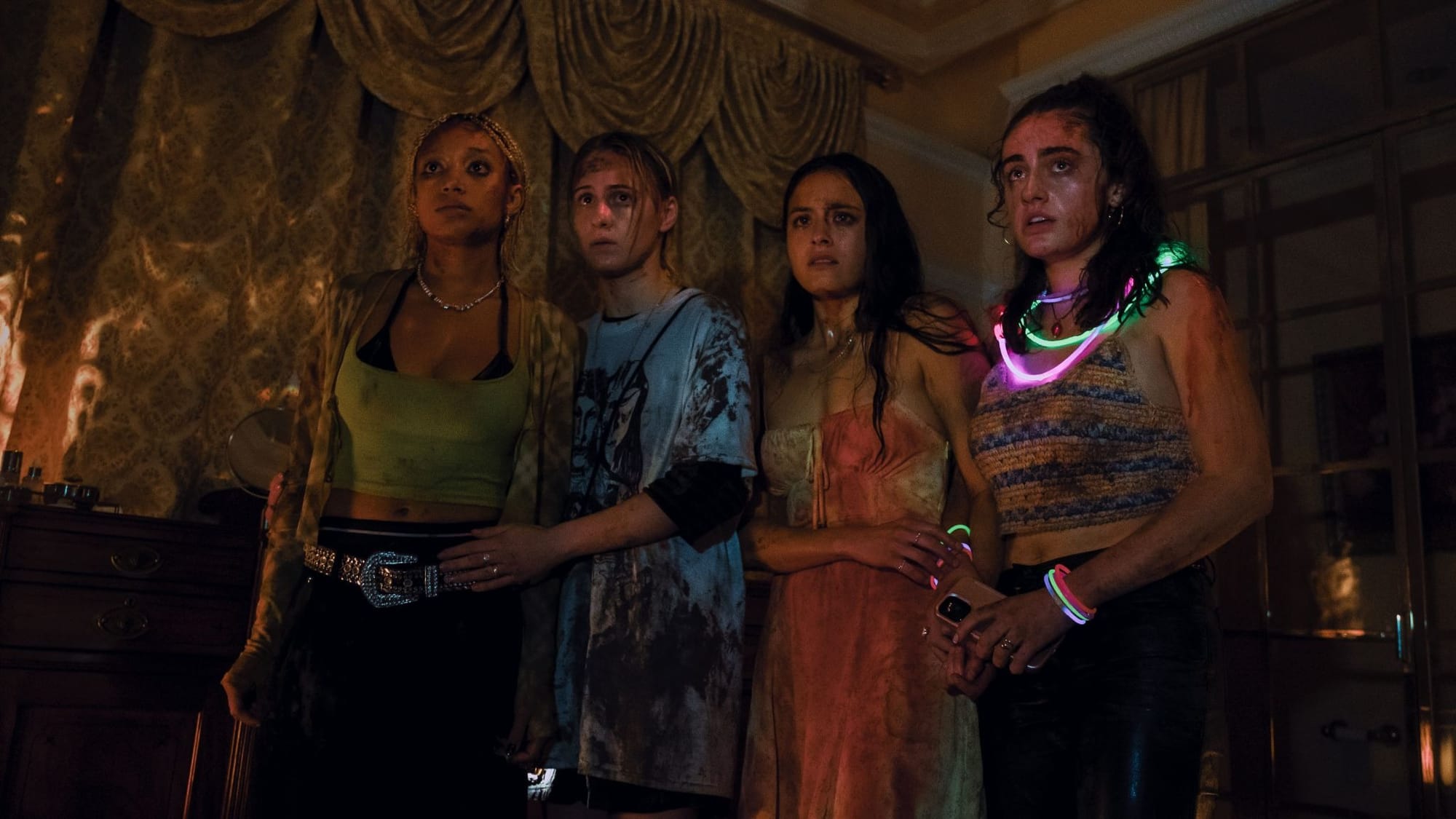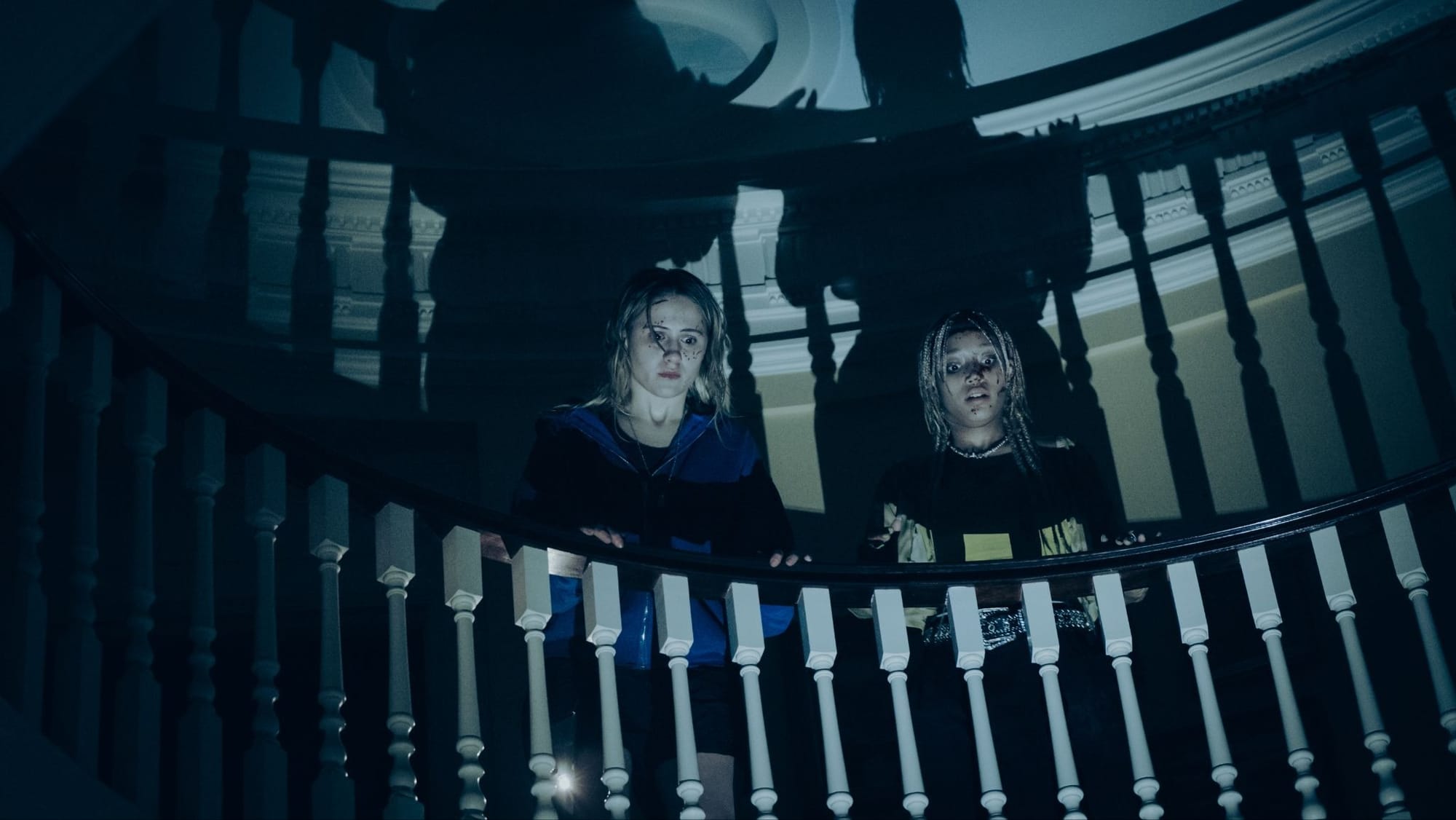Disclaimer: The following article contains spoilers for the film 'Bodies Bodies Bodies'.
Bodies Bodies Bodies is an A24 slasher film that cleverly dissects and satirizes Gen Z stereotypes, revealing underlying prejudices and competitive intra-class struggles that permeate the lives of today’s youths. The characters' interactions and the film's dark comedy tone dismantle assumptions around the generation's wealth, privilege, identity, and victimhood, ultimately championing a more nuanced understanding of the socio-political dynamics of today’s youngest working-age generation. This is why Bodies Bodies Bodies is relevant to the United Nations Sustainable Development Goal of Reduced Inequalities.

Like any other generation, Gen Zs, or those born between 1997 and 2012, have certain stereotypes attached to them that more often than not generate friction between them and older generations. These stereotypes range from a very pragmatic and selfish approach to work, a hyper yet superficial awareness and contribution to larger political discourse, to frequently using mental health as an excuse to get out of things. Bodies Bodies Bodies follows a group of six Gen Z friends, who one way or another embody these stereotypes. The film uses an association with the slasher genre, the introduction of a serial killer amidst them, to lay these stereotypes bare and dissect these characters, ultimately giving its viewers a more nuanced, human, and kind understanding of the generation.

The film follows twenty-something Sophie (Amandla Stenberg) and her girlfriend Bee (Maria Bakalova), who decide to spend the weekend with Sophie’s childhood friends in a country home (later revealed to be a mansion) which belongs to the parents of one of her friends. Despite Sophie & Bee’s laidback character, they’re greeted by a rowdy bunch who do Tik-Tok dances, talk in internet slang, and consume alcohol as if it’s water. Here, Bee gets a glimpse of a side of Sophie she was yet to be familiar with.
It is also immediately clear that there are tensions within the group, as this is the first time Sophie has seen them since she was admitted to rehab; all because they betrayed her by telling her parents about her substance abuse. As a storm settles in, the group retreats into the safety of the mansion and decides to play 'bodies, bodies, bodies', a rendition of the party game Werewolf where instead of guessing who in the group is a murderous werewolf, they have to figure out who among them is a serial killer. Long story short, the game becomes a little too immersive and one of them is found dead.

With tensions through the roof, the characters attack each other physically, verbally and emotionally in an attempt to reveal the killer and save their lives, laying bare their prejudices to each other and the real causes behind them. In one instance, one of the characters is offended after being called ‘upper middle class’. This destroys their perception of themselves as a disadvantaged underdog that has every right to protest for social causes both online and offline, a character that can be recognized as a social justice warrior. This particular character’s redemption arc happens when they allow themselves to be vulnerable and voice their concerns (and hopelessness) in a more structured manner without attacking the person they’re communicating with.
Bodies Bodies Bodies utilizes the slasher format to expose a deeper horror: the performative cruelty of a generation raised on social media activism and class anxiety. As the mansion’s survivors turn on each other—dissecting privilege, trauma, and identity with the same ferocity as the unseen killer—the film reveals Gen Z’s most uncomfortable truth: their greatest threat isn’t a masked murderer, but the inherited systems they’ve learned to mimic. Yet in its bloody finale, A24’s satire offers a glimmer of hope. When the characters finally drop the jargon and posturing, what remains isn’t a stereotype, but something far more radical: flawed, frightened humans capable of growth. The real twist? The possibility that this generation might just be self-aware enough to change the script.
Find out more about Bodies, Bodies, Bodies on www.a24films.com/films/bodies-bodies-bodies.
